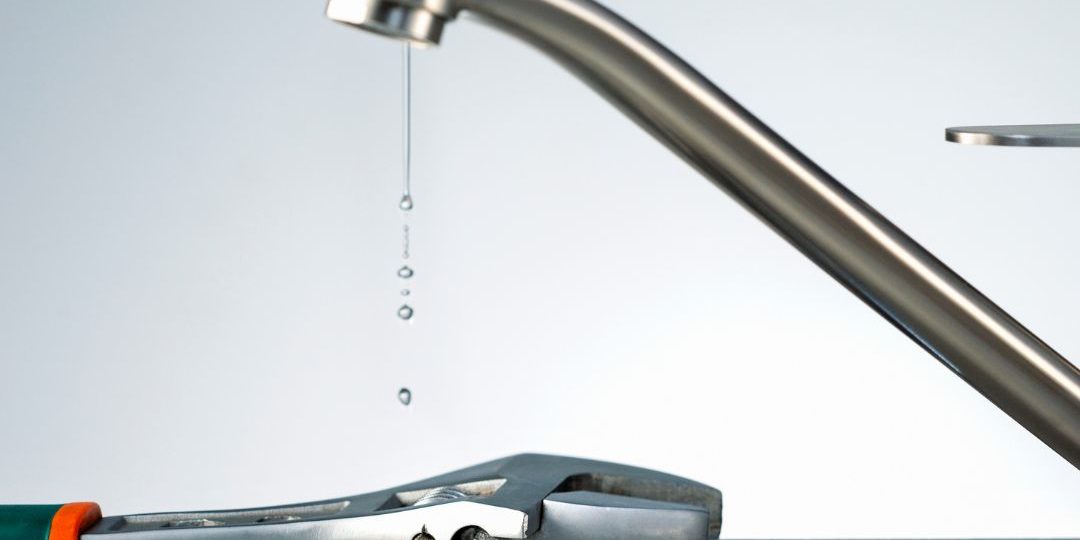Common Causes of Bathtub Faucet Leaks
When you encounter the frustrating issue of a bathtub faucet leaking, it’s essential to understand the underlying causes before attempting to fix it. Leaky faucets can waste water, lead to higher utility bills, and potentially cause damage over time. Here, we’ll explore some of the most common reasons why your bathtub faucet might be leaking and what you can do to address these issues.
Worn-Out Washers, Seals, or O-Rings
One of the primary culprits behind a leaky bathtub faucet is the deterioration of essential components like washers, seals, and O-rings. These parts are crucial for maintaining a watertight seal when the faucet is turned off. Over time, they can wear out due to constant use and exposure to water, resulting in leaks.
Issues with the Valve Seat
The valve seat is another critical component that can lead to faucet leaks. The valve seat is a connecting part between the faucet and the spout in compression faucets. If this part becomes corroded or damaged, it can prevent the faucet from forming a tight seal, allowing water to escape and cause a drip.
In addition to these common causes, other factors such as sediment buildup, mineral deposits, or improper installation can contribute to bathtub faucet leaks. Identifying the specific cause of your leak is essential for effective repairs.
Addressing these issues promptly is not only beneficial for conserving water and reducing your water bill but also for preventing more extensive damage to your plumbing system. In the next se
Diagnosing the Leak
So, you’ve noticed water dripping from your bathtub faucet, and you’re wondering, “Why is water leaking from my bathtub faucet?” and “Why is my bathtub faucet leaking after I turn off the water?” In this section, we’ll explore how to diagnose the source of the leak and understand why it may persist even after you’ve turned off the faucet.
Identifying the Source of the Leak
Before attempting to fix a leaking bathtub faucet, it’s essential to pinpoint the source of the problem. Leaks can occur at various points within the faucet, such as the handle, spout, or base. Here’s a simple diagnostic process:
- Handle Leak: If the water is dripping from the handle when the faucet is off, it could be due to a worn-out or damaged handle gasket.
- Spout Leak: A leak from the spout typically indicates issues with internal components, such as O-rings or valve seats.
- Base Leak: Water pooling around the base of the faucet suggests problems with the faucet’s body or its connection to the bathtub.
Post-Shutoff Dripping
The persistence of leaks after turning off the faucet can be perplexing. This is often due to residual water pressure within the plumbing system. Here’s why it happens:
- Residual Pressure: Water can remain pressurized within the pipes even after you’ve turned off the faucet. As this trapped water escapes, it can lead to post-shutoff dripping.
- Sediment Buildup: Accumulated sediment or debris within the faucet can obstruct the valve’s complete closure, allowing water to seep through.
While post-shutoff dripping may seem like a minor issue, it can contribute to water wastage over time. Fortunately, there are steps you can take to address this problem, which we’ll discuss in the next section.
By understanding the source of the leak and why it continues after shutoff, you’ll be better equipped to tackle the issue effectively. In the upcoming section, we’ll delve into the practical steps for fixing your bathtub faucet and stopping the leak for good.
Fixing a Leaky Bathtub Faucet
Now that you’ve identified the source of the leak and gained some insight into why it might persist after turning off the water, it’s time to take action and fix your bathtub faucet. Follow these step-by-step instructions to stop the leak and prevent further water wastage.
1. Shut Off the Water Supply
Before you begin any repairs, ensure that the water supply to your bathtub is turned off. You can usually find the shut-off valves beneath the sink or behind an access panel. If there are no individual shut-off valves, you may need to turn off the main water supply to your home.
2. Remove the Faucet Handle
To access the internal components of the faucet, you’ll need to remove the handle. This process may vary depending on the type of faucet you have, but generally, it involves the following steps:
- Locate the set screw or decorative cap covering the handle attachment point.
- Use an appropriate tool to remove the set screw or cap.
- Gently pull the handle off the faucet, exposing the valve assembly.
3. Inspect and Replace Worn-Out Components
Carefully inspect the components within the faucet, paying particular attention to the washers, seals, O-rings, and any other parts that may show signs of wear or damage. Replace any worn-out components with new ones to ensure a watertight seal.
4. Reassemble the Faucet
After replacing any necessary parts, reassemble the faucet in the reverse order of disassembly. Make sure to secure the handle firmly and replace any decorative caps or covers.
5. Turn On the Water Supply and Check for Leaks
Once you’ve reassembled the faucet, turn on the water supply gradually. Check for any signs of leaks or drips. If the faucet operates without any issues and there are no leaks, you’ve successfully fixed your bathtub faucet.
Remember to exercise caution throughout the repair process, and if you encounter any difficulties or if the leak persists, it may be best to seek professional plumbing assistance. Plumbing repairs can be complex, and it’s crucial to ensure that the issue is fully resolved.
Post-Shutoff Dripping
You’ve successfully fixed your bathtub faucet and put an end to that irritating drip when the faucet is on, but you may still be wondering why water continues to leak after turning it off. Post-shutoff dripping can be a common occurrence, and it’s important to understand why it happens and how to manage it effectively.
Understanding Post-Shutoff Dripping
Post-shutoff dripping occurs because of residual water pressure within the plumbing system. When you turn off your faucet, water can remain trapped in the pipes between the faucet and the main shut-off valve. This trapped water has nowhere to go but out through the faucet, leading to a post-shutoff drip.
Managing Post-Shutoff Dripping
While post-shutoff dripping may seem like a minor inconvenience, it can contribute to water wastage over time. Here are some tips for managing this issue:
- Wait It Out: In many cases, post-shutoff dripping will stop on its own as the trapped water gradually drains from the pipes. Be patient, and it should cease after a minute or two.
- Gently Turn the Faucet On and Off: If the dripping persists, try gently turning the faucet on and off a few times. This can help release any remaining trapped water and stop the drip.
- Check for Obstructions: Sediment buildup or debris within the faucet can hinder the valve’s complete closure. Regular cleaning and maintenance can help prevent this issue.
- Consider a Pressure Regulator: If post-shutoff dripping is a persistent problem in your home, you may want to consider installing a pressure regulator. This device can help reduce excess water pressure, minimizing the chances of post-shutoff dripping.
While post-shutoff dripping is usually harmless, it’s essential to address it to conserve water and reduce water bills. By following these tips, you can effectively manage this common issue.
When to Seek Professional Help
While many bathtub faucet leaks can be resolved through DIY efforts, there are situations where it’s best to seek professional plumbing assistance. Your trusted plumbing experts, The Family Plumber, are here to provide reliable solutions for all your plumbing needs in Surprise, Arizona.
When Should You Call a Professional Plumber?
- Complex Repairs: If you’ve attempted to fix your bathtub faucet but the issue persists or seems more complex than initially thought, it’s time to call in the professionals. Complex problems may involve intricate valve systems or hidden leaks that require expert attention.
- Multiple Faucet Leaks: If you notice leaks in multiple faucets throughout your home, it could indicate a more significant plumbing issue. A professional plumber can assess the situation and identify the root cause of the problem.
- Water Heater Repairs and Installation: When it comes to water heaters, whether you need a repair or a new installation, it’s best to rely on experienced plumbers. Your water heater plays a crucial role in your home, and proper installation and maintenance are essential for safety and efficiency.
- Toilet Repair and Installation: Leaky toilets can waste a substantial amount of water. Professional plumbers can quickly diagnose and repair toilet leaks, as well as handle new toilet installations.
- Garbage Disposal Installation: Installing a garbage disposal requires expertise to ensure it functions correctly and doesn’t lead to plumbing issues down the line.
- Water Treatment and Purification: If you’re concerned about the quality of your water, professional plumbers can install water treatment and purification systems to provide your family with clean, safe drinking water.
The Family Plumber: Your Trusted Plumbing Partner in Surprise, Arizona
At The Family Plumber, we understand the importance of a well-maintained plumbing system for your home or business. Our team of skilled plumbers is equipped to handle a wide range of plumbing services, including plumbing repairs, sewer services, water heater repair and installation, toilet repair and installation, garbage disposal installation, water treatment, and more.
When you choose The Family Plumber, you’re choosing a plumbing company with a reputation for excellence and customer satisfaction in the Surprise, Arizona area. We’re committed to providing top-notch service, and we’re just a phone call away when you need us.
Don’t hesitate to contact The Family Plumber for all your plumbing needs. Whether it’s a stubborn faucet leak or a more complex plumbing issue, we’re here to help.







